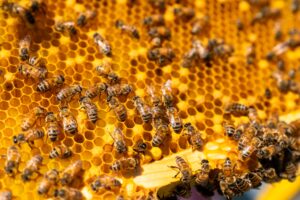You probably know that strawberries and chocolate go well together. But did you know that parmesan cheese and basil also go well with strawberries?
Any food morsel can be broken down to a handful of aromas, which define the essence of the ingredient.
Strawberries, for example, are mainly defined by fruity, cheesy, green and roasted aromas. This is why they go so well with chocolate, an ingredient rich in roasted aromas. And this is why strawberries also go well with parmesan cheese and basil.
How do we know all this? Science, of course. The science behind combining different food items is the mantra of Belgian company Foodpairing.
“We help chefs in discovering what food goes well together. No idea what to combine with vegetables or if you’re into new food like algae, even insects? Foodpairing will help you out,” says Bernard Lahousse, co-founder of Foodpairing.
“How do we know what combines together? The secret lies in the aroma profile of the ingredients,” he adds.
“The method is based on the principle that foods pair well with one another when they share key aroma components. It is estimated that 20% of a tasting experience comes from taste, whereas 80% comes from the smell or the aroma,” says Bernard.

The science behind the perfect match
This may come as a surprise, but aroma is actually the most important part of the flavour experience.
“Ever had a cold and you couldn’t taste anything? Well actually, you couldn’t smell anything. When your nose is blocked, the aromas cannot reach your sense of smell, so your food is tasteless,” Bernard explains.
Foodpairing research involves using advanced laboratory techniques like gas chromatography (GC) and mass spectrometry (MS). These techniques break down foods into their basic chemical components, which are used to reveal their aromas. But there is more.
“Devices like GC-MS can detect aromas, but they ‘smell’ the way machines do, not human beings. Via machine learning, Foodpairing is capable of translating what machines smell into what humans smell,” says Bernard.
Once an aroma profile is made for a particular food item, you can compare it against a database of more than 2500 aroma profiles that Foodpairing has built over the past 9 years.
Then, much like a dating website, once you’ve got a match between two different participants, you (likely) have a winning combination.
Deliciously weird combinations
Based on this approach, Foodpairing has come up with some interesting and unusual combinations that are based solely on the science of flavour and aroma.
Combinations like kiwifruit and oyster, white chocolate and caviar or chocolate and cauliflower are just some examples.

For Bernard, his favourite combinations vary. “I do like many combinations. It changes from time to time. I like rice with elderflower, plum and wasabi, algae and sesame,” he says.
For some inspiration and more winning combinations, like ceviche with mango salsa or sweet potato ice cream with orange and lemongrass flan, head off to Foodpairing’s blog. Here you will find crazy (but tasty) food combinations, including recipes and bits about the science behind it all.













